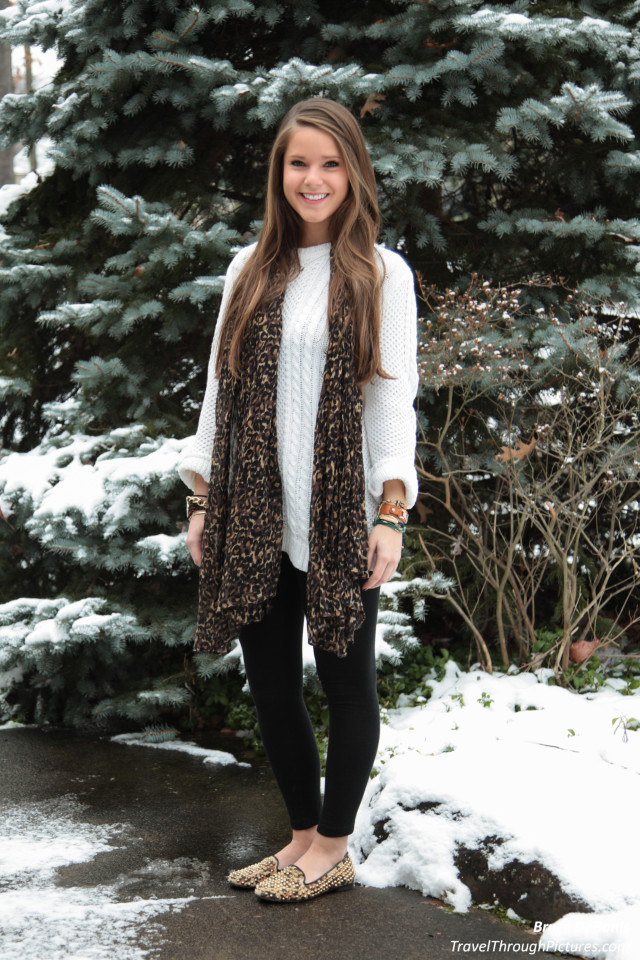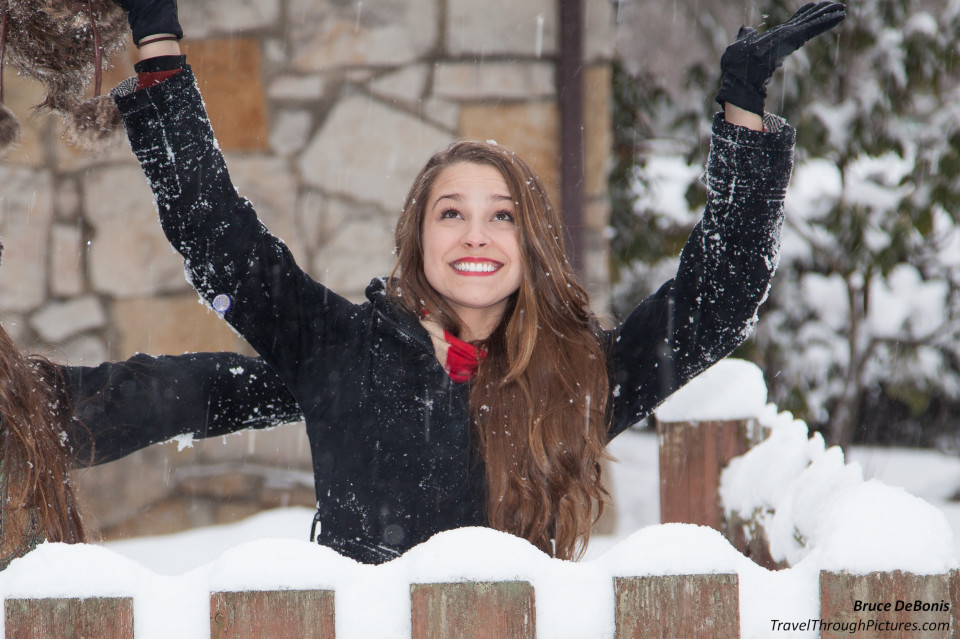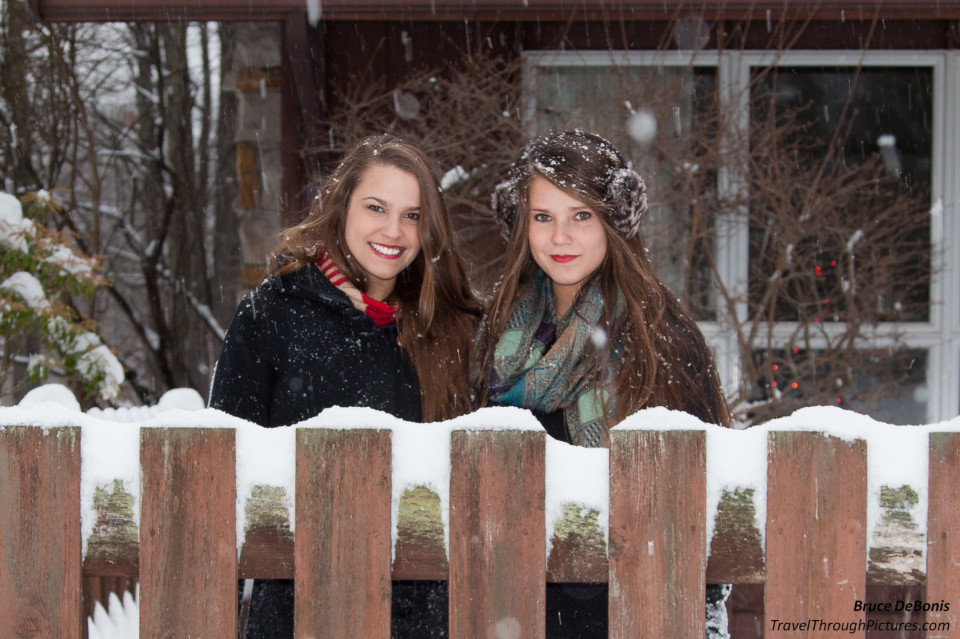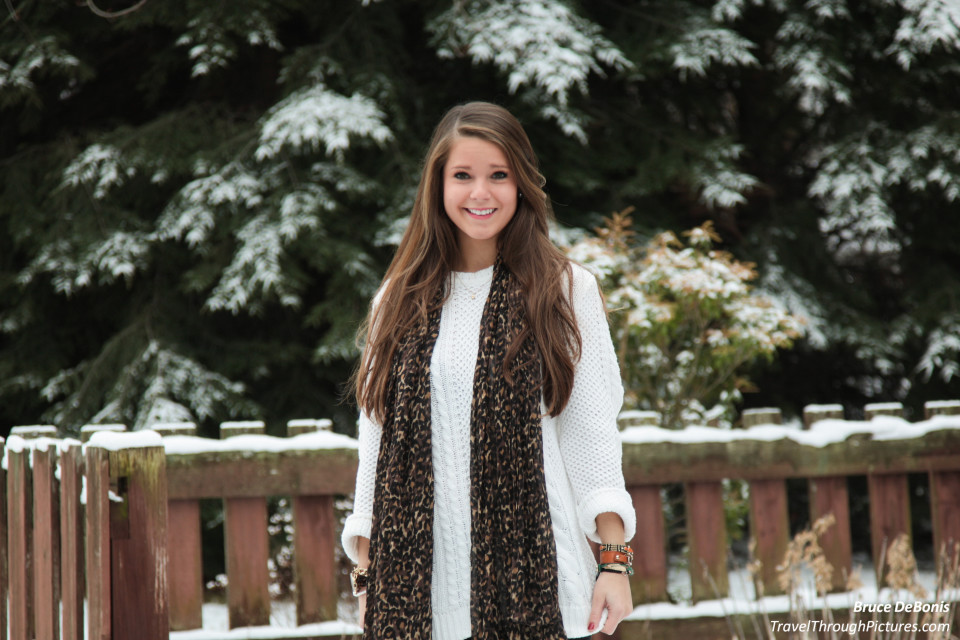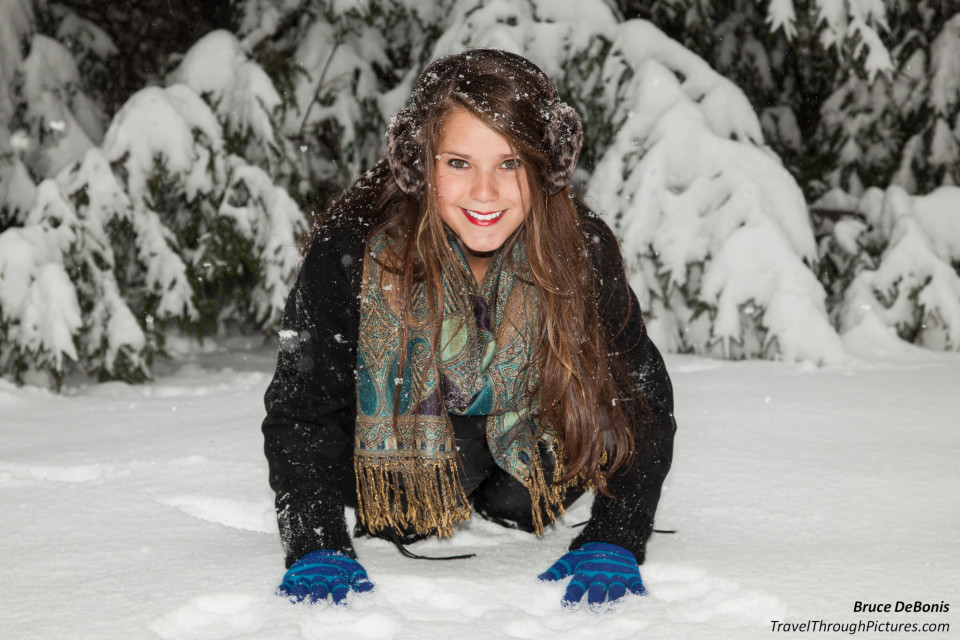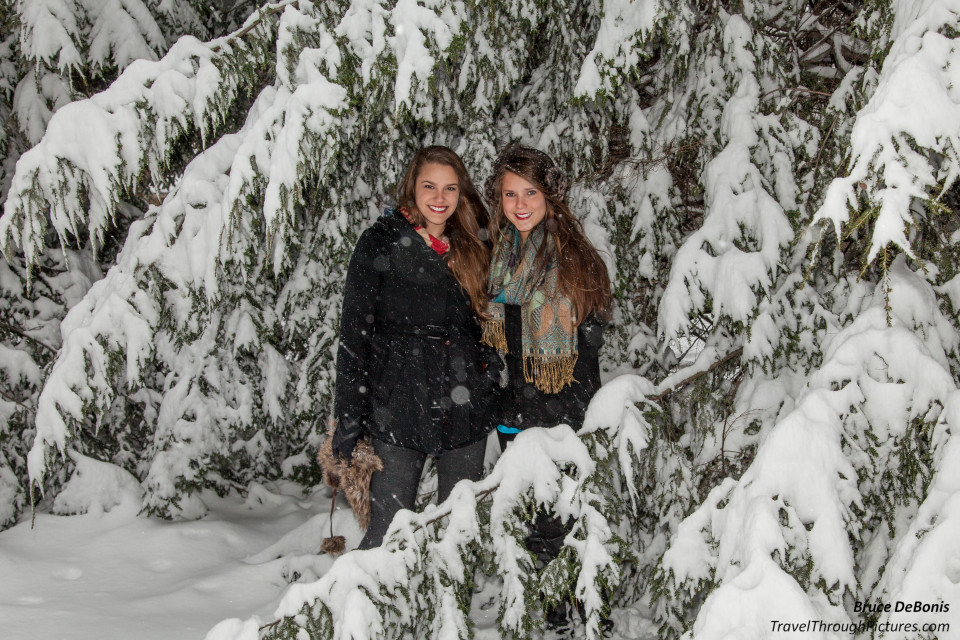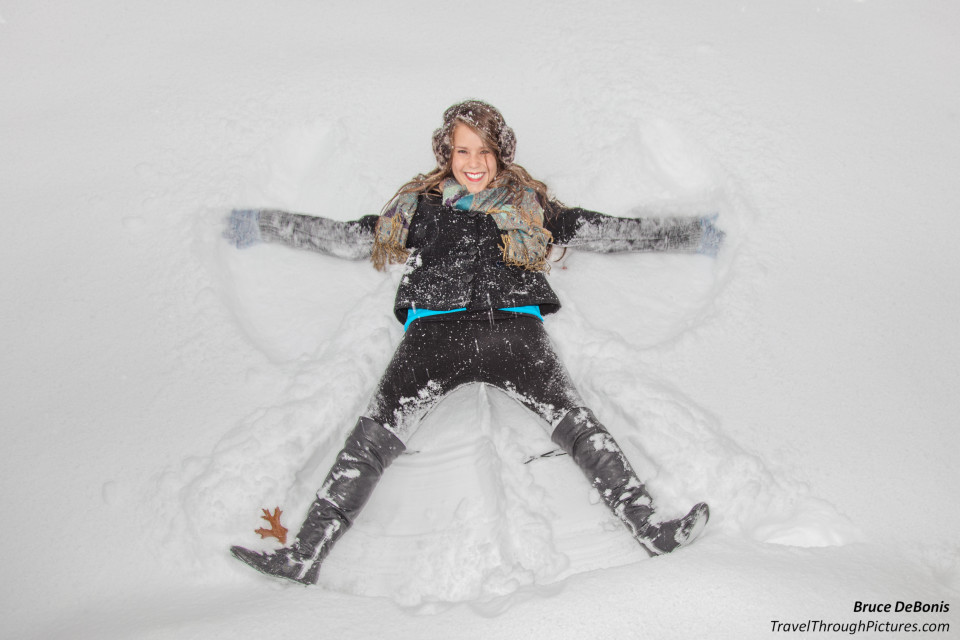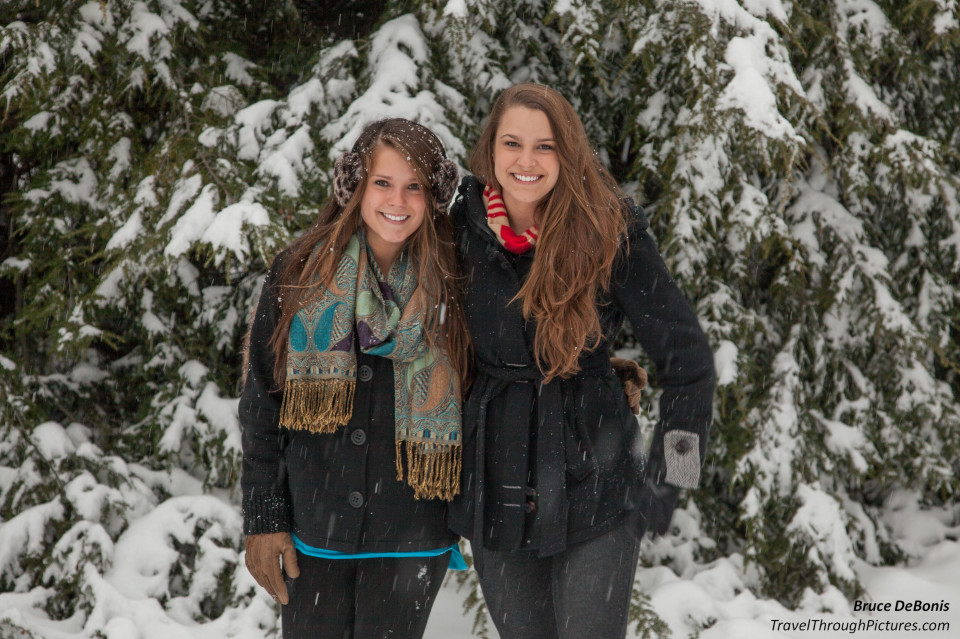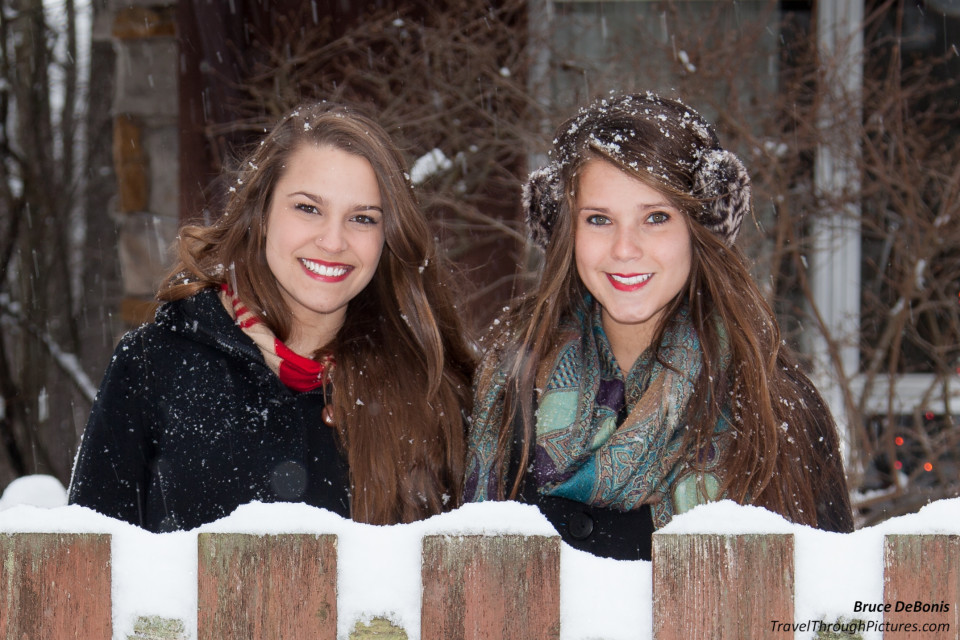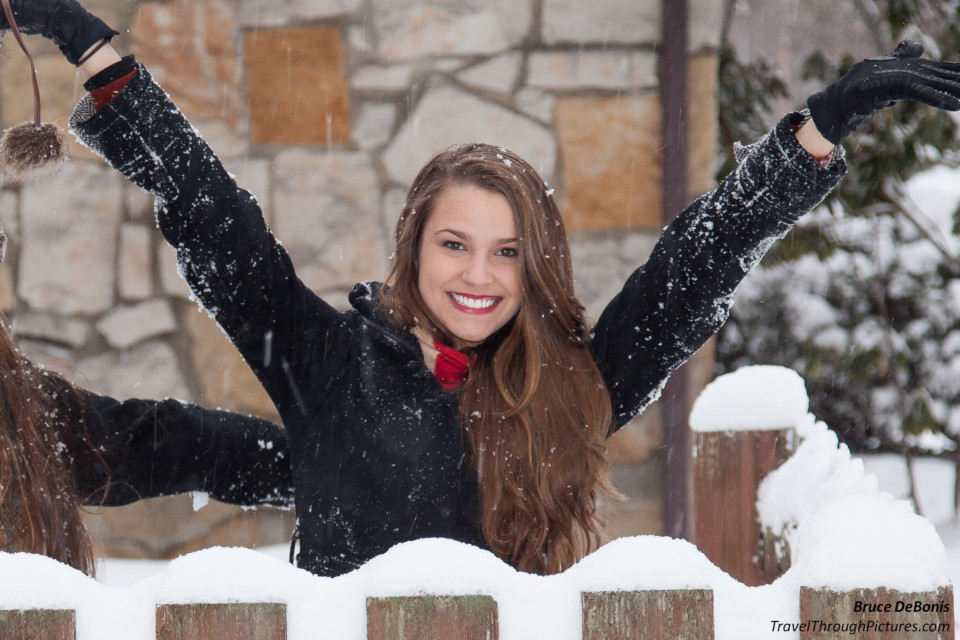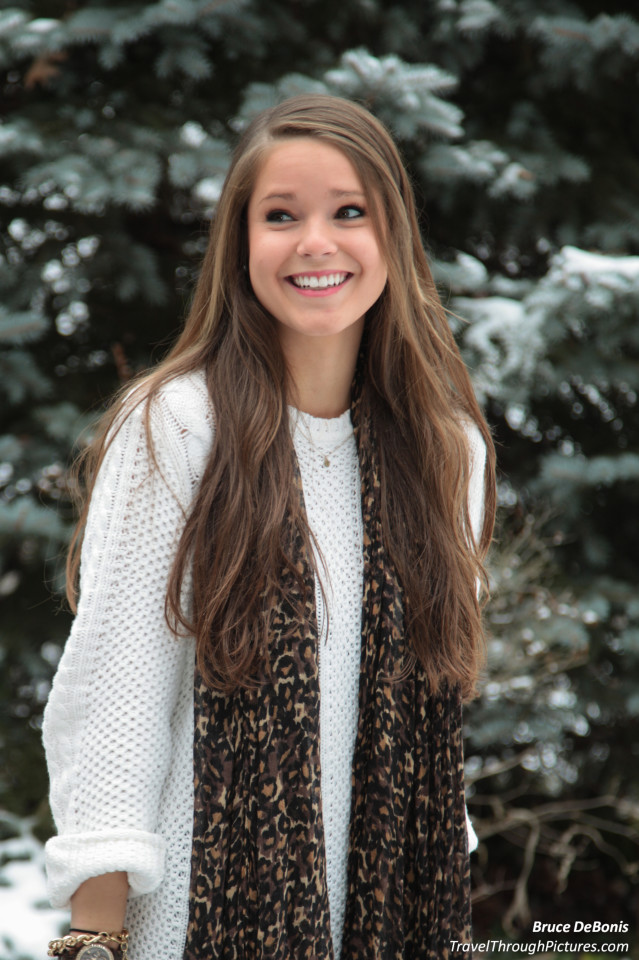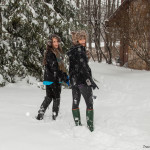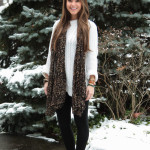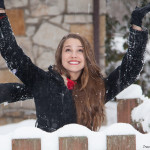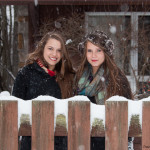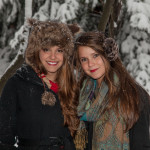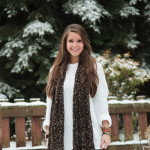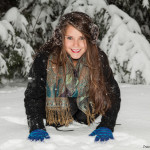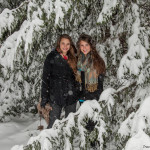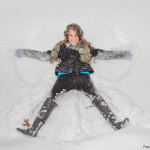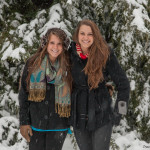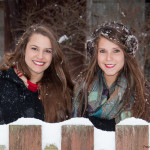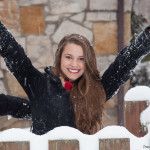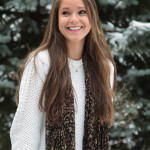Pretty Women and Fill Flash
What is better than looking at pictures of pretty women? Why reading about fill flash of course!
I hate flash photography. I suck at it and could never get good shots when I use a flash. Even with all this technology and automatic this and that, I still got crappy results. So as my readers know, my whole reason for being is to get off automatic and flash photography is no different. If you want great shots, you gotta go naked. So where to start? Read on…..
A good place to start learning about flash photography is using a flash during the day to fill in the harsh shadows caused by the sun. Or, as in these photos, eliminate harsh contrasts caused by a snow scene. Our cool digital cameras (DSLRs) cannot handle the wide range of bright to dark that exists in a snow scene like our eyes can. This distance between bright to dark is called dynamic range and improving it to where it is near the capabilities of our own eye/brain system is one of the last engineering frontiers to improving digital image quality.
WARNING: This stuff is not easy and frustrating. I hope I am giving you an easy approach for doing it properly but I admit it, it is tough. I recommend grabbing a cooperative friend and spending an hour or two outside experimenting and learning – about fill flash that is. Don’t wait for a special occasion to try and follow these instructions as your head will explode, your friends and family with hate you, and your shots will look like crap.
First, Find Some Pretty Women
While I like to spout on about technical things and how to do this or that, I found that you can shoot completely crappy pictures from a technical perspective and no one will care about your lack of talent if the women in them are pretty.
The wonderful thing about being switched at birth is that my nieces are pretty. Good thing they don’t share any of my genes.
How to Prep the Women
I have no clue about how to prep these chicks for a photo shoot. Ya kidding me? When I was young, prepping them meant buying them gallons of drinks; but hey, these are my nieces I am talking about here. So I just told them I wanted to take their picture out in the snow and they disappeared for about 45 minutes. I heard the whir of fans, rumble of heavy machinery, and high pitched drilling going on. Yikes. I don’t want to know what miracles of modern science were being applied to goodness knows what things.
All of a sudden they appeared and well, …. they looked great! This part is easy!
Camera Settings
Camera manuals and some blogs will tell you to just pop on your flash, or pop it up if you have one built into your camera, put your camera in Automatic Mode and shoot. The computer will do it all for you. Well this auto-crap doesn’t work all that well in my opinion, so you have to take control of things. Here are the settings I recommend you start with:
- Mode: Manual (no need to change this during the shoot)
- ISO: 200 (no need to change this during the shoot)
- Type: RAW (no need to change this during the shoot)
- Shutter : Start at your camera’s max sync speed (I used 1/100 sec)
- Aperture: Start at f/8 (Aperture controls background brightness; I shot these pics in the f/4.5 to f/6.3 range)
- Turn Highlight Alert ON in your camera settings menu
- Flash: Manual with various powers (flash power controls subject brightness)
Killer Flash Rule: Aperture controls background brightness and your flash controls subject brightness.
You will be adjusting the aperture rarely, and the flash power extensively. Sorry, this is tough.
Mode: Manual
You have to take charge, automatic just doesn’t cut it. Automatic settings are good in that they increase the likelihood of a good shot but not always. And with auto flash, your background may be too dark and faces may be harsh and washed out.
ISO: 200
Lower ISO numbers give you better image quality and while my camera will go to 100, I can’t tell the difference so I go to 200. ISO 200 gives me more room to play in software later in that lower ISO settings will have less digital noise in the dark areas of your photo. So, if you need to brighten the shot or an area, you will have more latitude to move your sliders without introducing noise. At ISO 400 and above, I can see some picture degradation and noise in the dark areas, so if I don’t have a need to go that high, I don’t do it. Set this for your shoot and don’t change it.
Type: RAW
RAW files have way more data in them than the old standard of JPG. Manipulating RAW files in software will always yield a better quality JPG than manipulating a JPG. I never shoot JPGs anymore (unless I made a settings goof). Set this for your shoot and don’t change it.
Shutter: Your fasted camera sync speed (I used 1/100 sec)
Grab that awful, awful document called your camera manual and check it for information on flash sync. It will denote the maximum shutter speed you can go and still operate appropriately with your flash. You can choose that speed or slower. I chose 100 because… well I don’t know why. I guessed at this. I figured 100 is the slowest speed I can go and not blur the shot from camera shake so I did. My camera can sync up to 1/200 sec but I didn’t go there. If you are not sure what the max sync is for your camera, 1/100 sec is a safe bet. If there is little light say at dusk, set it for 1/60, otherwise use your fasted allowed by your camera. Set this for your shoot and don’t change it. (I lied a bit… you may have to slow it down if the light is poor and near dark as I describe in Aperture below, but then this is not fill flash but full flash photography.)
If you are wondering what sync is, don’t worry about it. Just follow your manual and don’t set your shutter speed above this setting. You see, cameras really can’t operate shutters faster than what it documents as its highest sync speed. To go faster, say up to 1/2000 sec, it uses a trick: It drops the second curtain (shutter) down while the first curtain is still dropping therefore a flash will not cover the whole frame at those speeds. Huh? Your camera’s “shutter” is really two curtains… one drops, then the other. It goes like this: 1) first curtain drops thus opening the sensor to light, 2) flash fires ON then shuts OFF, 3) second curtain drops closing out the light, and 4) both curtains reset. Note that a flash duration is short no matter what the power… incredibly short… way shorter than your fastest shutter speed although it may not appear to you this way. So if both curtains are in motion, as what happens during faster shutter speeds, then the whole sensor is never all exposed, and therefore the flash will never cover the whole frame and you will have dark/light/dark bands across your picture. Still huh? Don’t worry about it, it is not important.
Aperture: Start at f/8, then modify to change background brightness
To set this properly, you are going to have to run some experiments to get background brightness the way you want it. Normally, you set aperture based on how much depth of field (depth of focus) you want but with flash, consider aperture a lighting control on your background. A wider aperture, smaller f numbers, will brighten your background. A narrow aperture, larger f numbers will darken your background. Your flash power will determine how bright your subject is so don’t worry much about this now. For these shots, I wanted a brighter background to show off the snowy environment but I didn’t want it to overpower the women. So, many were shot at f/6.3 to shade the background somewhat. As I moved around and the natural brightness of the background changed, I tweaked the aperture settings. Set your aperture for the kind of background, lighter or darker, you want and don’t worry about how your subject looks… that is the flash’s job.
Now I have to say, the sun was not bright and this was an overcast and snowing day. It was a moderately bright day due to the snow, but the sun was not so bright. So if you are shooting say on a sunny, snowy day, you may have to put your aperture way smaller (higher f/number) just so you don’t blow out your pictures. I recommend turning on highlight alerts in your camera system menu. Then, when you look at the picture you just took, any under or overexposed (crushed or blown) areas will blink on the camera LCD. Tweak the aperture as necessary to limit or eliminate the alerts, also known as “blinkies”. Again, experimenting is required but once you have it set properly so the backgrounds look OK, you are done.
So what if you open your aperture all the way and the background is still too dark? That is OK, just start slowing down your shutter speed until you background is as bright as you want it. Don’t worry much about a slow shutter as your flash will freeze your subject. Remember, your flash duration is incredibly short regardless of the flash power setting and is just like a super fast shutter speed. Flashes will freeze any movement of your subject so your shutter speed is not important in this case.
So remember: Aperture controls background brightness and your flash controls subject brightness.
Flash: Manual with various powers, start at 1/4 power
Good shots now are all bout flash power. This is it right here. I changed flash powers quite a bit during this shoot. The reasons for this are two: 1) You want your subjects properly lit and not dark or bright, and 2) You must change flash power as you move closer or farther away from your subjects. This is the part of fill flash photography that sucks and takes some work. You have to experiment to get it correct. Just shoot at say ¼ power and see how that looks and adjust from there. The reason for this is what is called the inverse square law which tells us that if you double your distance from your subject, the flash is only ¼ as bright or if you move ½ closer to your subject, the flash is 4 times as powerful. Sheesh!! Look, don’t worry about the math or trying to remember that formula. All this rule tells you is that you have to change and experiment with flash power when you move towards or away from your subject. Really, it is no big deal, just keep checking and adjusting. No magic single setting here.
So remember: Aperture controls background brightness and your flash controls subject brightness.
Summary of This Screwing Around
Once you set your shutter and ISO, you are done with these settings. Run some experiments and set your aperture and really, you don’t have to change this one you get it the way you like it. But flash power… well that is a different thing. You have to keep checking your subject brightness and tweak your flash power.
You can try putting your flash in TTL or whatever auto mode it has… it may work or it may work most of the time. But you just can’t beat taking control of the flash unit yourself. Once you get the hang of it, you can do it very quickly and it becomes no big deal. Note I said becomes no big deal. Give it a try… it is not so bad and you really will be thrilled with the professional looking results.
Getting Correct Color
I used the Color Checker tool the help me get the color correct. Just snap a photo with the Color Checker somewhere in the frame, and you can adjust for perfect color later in software. I only shoot RAW so this makes all adjustments easier and better given that RAWs have tons of data in them to manipulate. Using LightRoom 4, I just clicked my eyedropper into one of the gray swatches and the color pops to perfect immediately. Just slick.
When I changed locations, from within the trees to out in the open, I should have re-shot the Color Checker but did not. So I still did have to do some tweaking here and there, but for the most part, that one shot got me 99% of the way there to great color. Why do you need to do this? I don’t understand it, but our DSLRs just don’t do color, also known as white balance, properly. Tweaking white balance is my most common post processing adjustment.
Oh, you don’t have to buy this slick color tool, you can just buy an inexpensive gray card…. does pretty much the same thing for basic white balance setting.
How To Get Texture In Snow
Check out my niece making snow angels. Notice you can see the snow. This is no accident as normally, snow loses all texture in photographs and looks like a white, featureless wash.
For this, I made sure that my snow was always a bit underexposed and gray looking. When I tweaked later in software, mostly I had to increase the exposure and the snow then washed out. In LightRoom, I then drop Highlights and the texture magically re-appears. Just cool.
Techie Stuff (For geeks only, not required reading)
When we shoot in high dynamic range environments such as snow scenes, our cameras can’t handle it and either the white snow gets blown out (max white with no detail), or dark areas get crushed (min black with no detail). Either way, your picture is not good and no software can retrieve detail by adjusting brightness up or down when min or max values for black or white are recorded. There simply is no picture data available at these extremes.
It is even a bit more complicated than this as the camera records values for each pixel not for black and white but for each of the primary colors of red, blue, and green. The firmware in the camera actually assigns a value of 0 (no brightness) to 255 (max brightness) for each of these three colors. When they are recorded at their maximum or minimum values (0 or 255), there is no data to make picture detail. And, by the way, equal values of say R=100, B=100, G=100, give you gray with higher equal numbers yielding lighter grey and smaller equal numbers yielding darker gray.
So what to do? Use a fill flash to provide some light to the dark areas and smooth out harsh contrasts. This is really important on faces. Your pictures will look a whole lot better if you can fill a face and clothing in with a bit of flash. I am so impressed at how fill flash can improve outdoor, daytime shooting that I think you should use fill flash most of the time when shooting outdoor people portraits.
The Equipment:
- Canon 5D MkII
- Canon Speedlight 430EX
- Canon 24-105 L f/4.0 IS
- Pretty Women
- LightRoom 4


